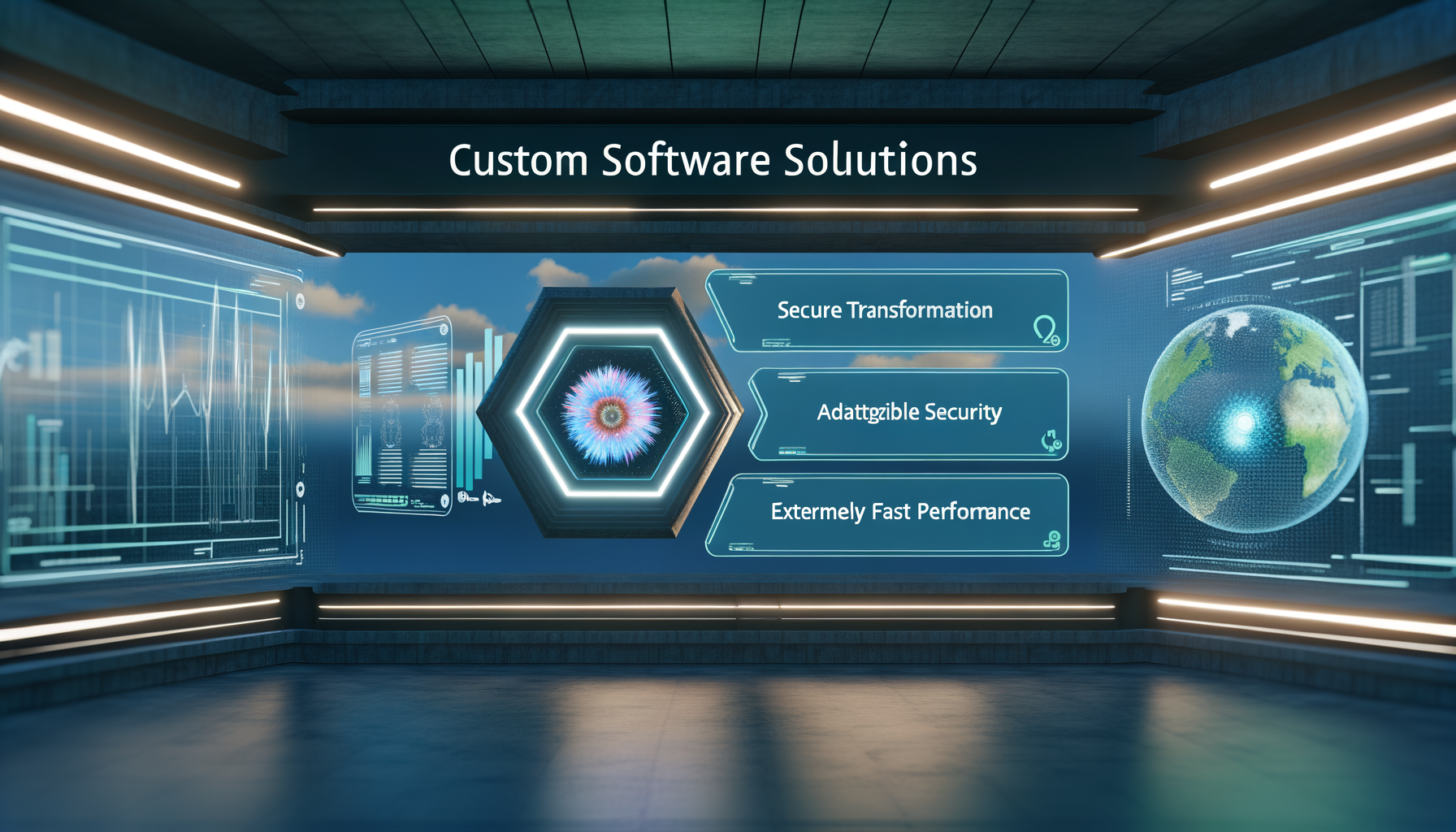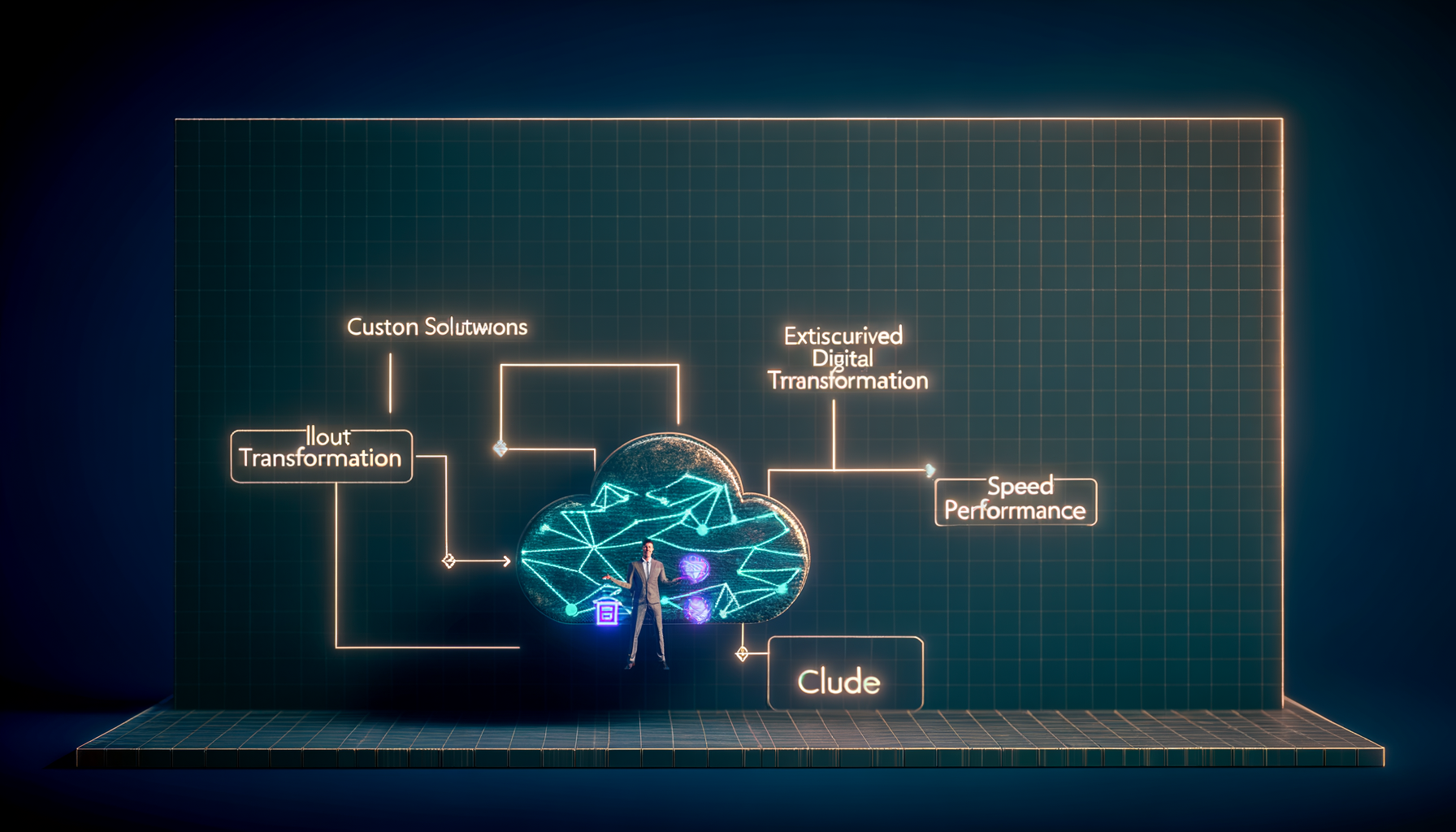Custom software solutions are not just about addressing immediate needs—they're a strategic investment in your business's future. As a CTO or CIO, you face challenges like legacy bottlenecks and scalability issues. Did you know a recent McKinsey report found that companies integrating custom solutions saw a 30% increase in operational efficiency? In this article, we will explore how cutting-edge custom app development, AI integration, and cloud-native applications can redefine your enterprise software strategy, driving both growth and innovation.
The Evolution of Custom App Development
From Legacy to Innovation

Code-review collaboration between developers with Pacific Northwest landscape.
The journey from rigid, monolithic software to agile, custom solutions has been transformative. In 2025, the trend is set to focus heavily on personalization and integration capabilities, allowing businesses to tailor solutions that precisely fit their operational needs.
Custom app development now embraces innovative frameworks, leveraging microservices and cloud-native architectures to offer unprecedented scalability and flexibility.
For instance, Quicklook's approach integrates seamlessly with existing systems while enabling new functionalities, ensuring that your software evolves alongside your business needs.
LIST
- •Increased personalization
- •Enhanced integration
- •Scalability and flexibility
AI Integration: Transforming Software Capabilities
From Data to Decision-Making

AI-powered analytics dashboard with futuristic interface.
AI integration in custom software is no longer an option—it's a necessity. By 2025, AI is expected to drive a $15 trillion boost in global GDP, according to PwC.
At Quicklook, we incorporate AI to enhance decision-making, automate tasks, and provide predictive insights, turning raw data into actionable strategies.
Our clients have experienced significant improvements in efficiency and decision-making capabilities, thanks to AI-powered tools that simplify complex processes.
CALLOUT
AI will add $15 trillion to the global economy by 2025 - PwC
The Rise of Low-Code and No-Code Platforms

Diagram showing a simplified workflow using low-code platform.
Low-code and no-code platforms are democratizing software development, enabling faster deployment and reducing the need for specialized coding skills.
These platforms are particularly beneficial for SMBs, providing the agility to adapt quickly without the overhead of extensive development resources.
Quicklook's solutions offer low-code options that empower teams to create and iterate applications rapidly, ensuring a quick ROI and alignment with business goals.
QUOTE
"Low-code platforms are revolutionizing how businesses approach software development, making it accessible and efficient."
Microservices Architecture for Scalability

Diagram of microservices architecture with interconnected nodes.
Microservices architecture is key to building scalable, maintainable applications. It allows different services to be developed, deployed, and scaled independently.
This architecture aligns with the modern need for agile software that can adapt to changing market demands without significant disruption.
Quicklook employs microservices to ensure that our clients' applications are robust, scalable, and future-proof.
LIST
- •Independent service deployment
- •Enhanced scalability
- •Improved fault isolation
Cloud-Native Applications: The Path Forward

Cloud infrastructure with interconnected systems and data flow.
Cloud-native applications are built to leverage the full potential of the cloud, offering unparalleled scalability and resilience.
By 2025, Gartner predicts that 85% of enterprises will have a cloud-first principle due to the benefits of rapid deployment and cost efficiency.
At Quicklook, our cloud-native solutions are designed to optimize performance and ensure seamless integration with existing systems, paving the way for digital transformation.
CALLOUT
85% of enterprises will adopt a cloud-first principle by 2025 - Gartner
Frequently Asked Questions
QWhat are the latest trends in custom app development for 2025?
QHow can AI integration enhance custom software solutions?
QWhat are the benefits of adopting low-code and no-code platforms in custom app development?
Conclusion
Custom software solutions are pivotal for growth and innovation, particularly as businesses face evolving challenges and opportunities. By leveraging AI, low-code platforms, and cloud-native architectures, organizations can ensure their software remains agile and aligned with strategic goals.
Future Vision
As technology continues to evolve, staying ahead with bespoke solutions is not just an advantage—it's a necessity.
Schedule your AI audit with Quicklook.
